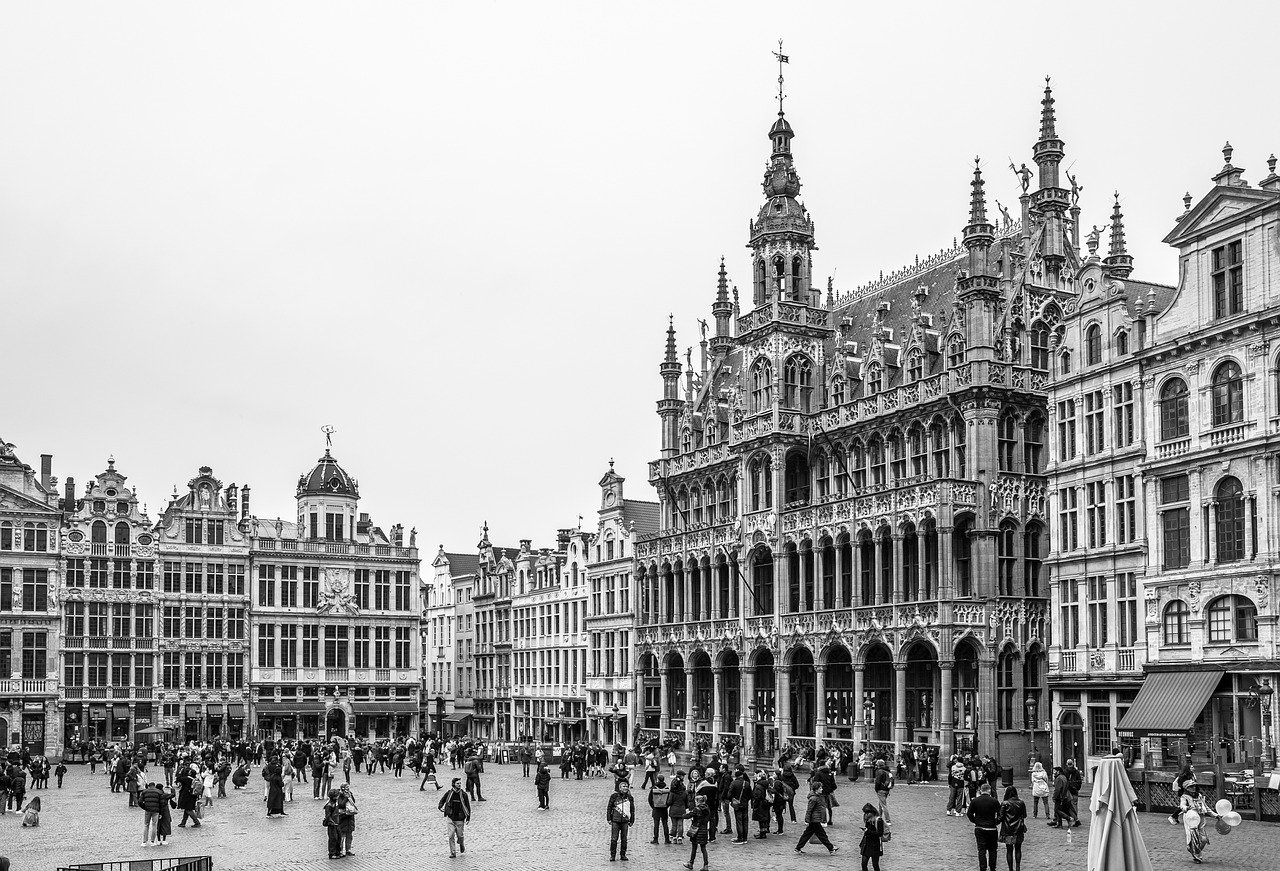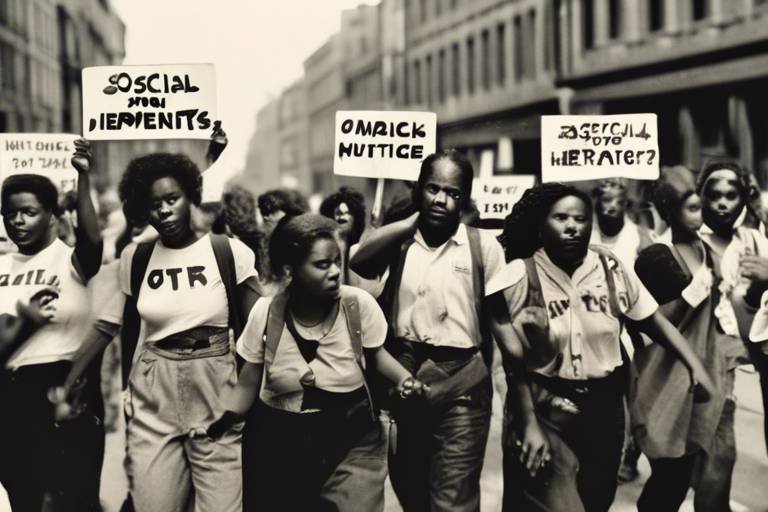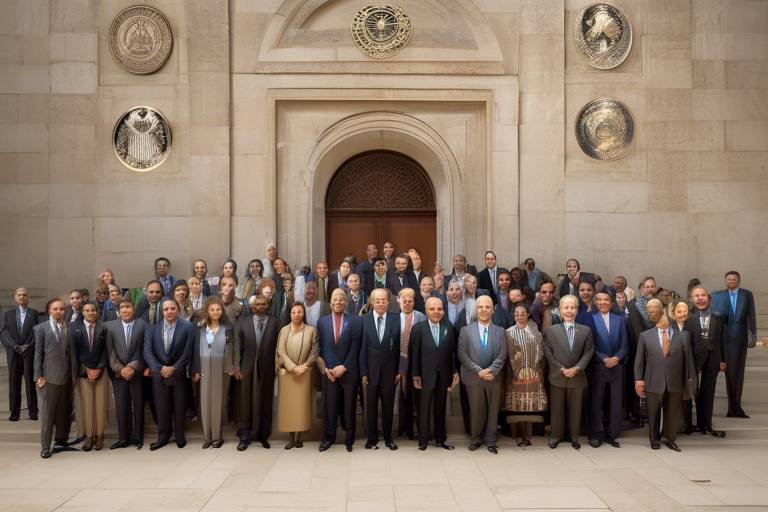The Role of Historic Preservation Commissions
Historic preservation commissions play a crucial role in safeguarding our cultural heritage, preserving architectural integrity, and maintaining the unique identity of our communities. Through their regulatory processes, design guidelines, and advocacy efforts, these commissions serve as guardians of our past, ensuring that the stories and structures that define our history are protected for future generations to experience and appreciate.
One of the core principles that guide historic preservation commissions is the identification, protection, and promotion of historically significant structures and sites within communities. By recognizing the value of these assets and working to preserve them, these commissions help maintain a sense of continuity and connection to our shared past, fostering a deeper appreciation for the history that shapes our present.
When it comes to regulatory processes, historic preservation commissions employ frameworks that allow them to review, approve, and enforce preservation initiatives and development projects. By carefully evaluating proposed changes to historic properties, these commissions ensure that any alterations respect the original character and significance of the structures, balancing the need for progress with the imperative of preservation.
Community engagement is a cornerstone of the work of historic preservation commissions, as public participation in decision-making processes is vital to ensuring transparency and inclusivity. By involving community members in discussions about the future of historic sites, these commissions foster a sense of ownership and stewardship among residents, creating a shared responsibility for the preservation of our collective heritage.
Design guidelines play a key role in shaping the preservation and rehabilitation of historic properties, providing a framework for property owners to make informed decisions that align with preservation objectives. By offering guidance on appropriate restoration techniques, materials, and architectural styles, these guidelines help maintain the authenticity and integrity of historic structures while allowing for necessary adaptations to meet modern needs.
When it comes to economic impacts, historic preservation efforts can have far-reaching benefits, including increased property values, boosted tourism, and the revitalization of historic districts. By preserving our architectural heritage, historic preservation commissions contribute to the economic vitality of communities, attracting visitors, businesses, and residents who value the unique character and charm of historic neighborhoods.
However, historic preservation commissions also face challenges and controversies, such as navigating the delicate balance between property rights, development pressures, and funding constraints. Finding solutions that satisfy the needs of property owners, developers, and preservationists alike can be a complex and contentious process, requiring careful consideration and negotiation to reach consensus on the best path forward.
One innovative approach that historic preservation commissions often promote is adaptive reuse, which involves repurposing historic structures for contemporary uses while preserving their architectural and cultural significance. By finding new ways to utilize existing buildings, these commissions breathe new life into old spaces, creating opportunities for creativity, sustainability, and community engagement that honor the past while embracing the future.
Looking ahead, future trends in historic preservation, such as a focus on sustainability, the integration of technology, and a commitment to diversity, will continue to shape the role and practices of historic preservation commissions. Embracing these evolving priorities will allow these commissions to adapt to changing needs and expectations, ensuring that our cultural heritage remains vibrant, relevant, and accessible to all.

Preservation Principles
Exploring the significance and impact of historic preservation commissions in safeguarding cultural heritage, architectural integrity, and community identity through regulatory processes, design guidelines, and advocacy efforts.
Understanding the core principles that guide historic preservation commissions in identifying, protecting, and promoting historically significant structures and sites within communities.
Historic preservation principles are the foundation upon which the work of preservation commissions is built. These principles encompass the recognition of the value of preserving historical structures and sites for future generations. The guiding philosophy revolves around the idea that these tangible remnants of the past hold intrinsic cultural, architectural, and social significance that contribute to the identity and character of a community.
Preservation principles emphasize the importance of identifying and documenting historically significant properties, establishing criteria for their evaluation, and developing strategies for their protection and conservation. These principles serve as a roadmap for preservation commissions to navigate the complex landscape of heritage conservation, balancing the need for progress and development with the imperative to safeguard the past.
Moreover, preservation principles promote the concept of stewardship, encouraging responsible management and care of historic resources to ensure their longevity and continued relevance. By upholding these principles, preservation commissions play a vital role in preserving the tangible links to our collective history and heritage, fostering a sense of continuity and connection across generations.

Regulatory Processes
Exploring the significance and impact of historic preservation commissions in safeguarding cultural heritage, architectural integrity, and community identity through regulatory processes, design guidelines, and advocacy efforts.
Historic preservation commissions play a crucial role in overseeing the regulatory processes that govern the preservation of historically significant structures and sites. These commissions typically follow established guidelines and frameworks to assess, review, and approve preservation initiatives and development projects. By evaluating proposed changes to historic properties, these processes ensure that any alterations maintain the integrity and authenticity of the structures while aligning with preservation objectives.
One key aspect of regulatory processes is the review of applications for alterations, renovations, or new construction within designated historic districts or landmarks. Preservation commissions assess these proposals based on specific criteria, such as adherence to design guidelines, compatibility with the historic character of the area, and impact on the overall cultural landscape. Through this regulatory oversight, commissions strive to balance the need for development with the preservation of community heritage.
In some cases, regulatory processes may involve public hearings or consultations to gather input from stakeholders, residents, and experts in historic preservation. This inclusive approach aims to foster community engagement and ensure that decisions reflect the interests and values of the local population. By involving the public in the decision-making process, historic preservation commissions promote transparency, accountability, and a sense of ownership among community members regarding the preservation of their shared heritage.
Moreover, regulatory processes may also encompass enforcement mechanisms to ensure compliance with preservation guidelines and regulations. This may involve monitoring ongoing projects, conducting site visits, and taking corrective action in cases of non-compliance. By upholding these regulatory standards, historic preservation commissions uphold the integrity of historic districts, protect cultural assets, and contribute to the long-term sustainability of heritage conservation efforts.

Community Engagement
Community engagement plays a vital role in the functioning of historic preservation commissions, ensuring that the decisions made reflect the values and interests of the local community. By involving residents, businesses, and other stakeholders in the preservation process, these commissions foster a sense of ownership and pride in the shared heritage of the community.
Through public meetings, workshops, and outreach events, historic preservation commissions provide opportunities for community members to voice their opinions, share knowledge about local history, and contribute ideas for preserving and celebrating the cultural heritage of the area. This inclusive approach not only enhances the decision-making process but also builds a sense of camaraderie and collective responsibility among community members.
Moreover, community engagement helps historic preservation commissions to raise awareness about the importance of preserving historic structures and sites, educating the public about the significance of these assets and the benefits they bring to the community. By fostering a deeper understanding of the value of cultural heritage, these commissions inspire greater support for preservation initiatives and encourage active participation in safeguarding the community's identity and character.
By actively involving the community in preservation efforts, historic preservation commissions create opportunities for meaningful dialogue, collaboration, and partnerships that strengthen the social fabric of the community. Through shared experiences and collective efforts, residents become stewards of their heritage, working together to ensure that future generations can continue to enjoy and appreciate the rich history and architectural legacy of their surroundings.

Design Guidelines
When it comes to historic preservation, play a crucial role in ensuring that the architectural integrity and cultural significance of historic properties are preserved while also accommodating the needs of property owners and developers. These guidelines serve as a framework for guiding the preservation and rehabilitation of historic structures, outlining specific requirements and recommendations to maintain the authenticity and character of the properties.
Historic preservation commissions often develop based on established preservation principles and best practices to provide clear direction to property owners and developers seeking to undertake projects within historic districts. These guidelines may address various aspects of design, including building materials, architectural styles, landscaping, and signage, aiming to harmonize new developments with the existing historic fabric of the community.
By adhering to , property owners can navigate the preservation process more effectively, ensuring that their projects meet the standards set forth by the historic preservation commission. These guidelines not only help maintain the visual coherence of historic districts but also contribute to the overall sense of place and identity that these areas embody.
Moreover, promote a balanced approach to preservation efforts, recognizing the need to adapt historic structures to contemporary uses while safeguarding their historical significance. They encourage innovative design solutions that respect the original character of the buildings, fostering a dialogue between past and present architectural practices.
Through , historic preservation commissions seek to foster a collaborative relationship between property owners, architects, and the community, emphasizing the importance of preserving the unique heritage of the past for future generations to appreciate and enjoy.

Economic Impacts
Historic preservation efforts have a significant impact on the economic landscape of communities, influencing property values, tourism, and the overall revitalization of historic districts. By safeguarding culturally significant structures and sites, historic preservation commissions contribute to the unique character and charm that attract visitors and residents alike. The preservation of historic properties often leads to increased property values, as these structures become desirable assets in the real estate market.
Furthermore, historic preservation plays a crucial role in promoting tourism and heritage-based economic development. Preserved historic sites and districts serve as attractions that draw tourists, history enthusiasts, and cultural explorers, boosting local businesses and creating job opportunities in the hospitality and tourism sectors. The preservation and promotion of historic landmarks contribute to the overall economic prosperity of a community by creating a sense of place and fostering a vibrant local economy.
However, economic impacts of historic preservation efforts are not without challenges. Property owners may face financial constraints when adhering to strict preservation guidelines, especially when costly restoration work is required. Balancing the economic interests of property owners with the long-term benefits of preservation can be a delicate process that requires collaboration and creative solutions.
Moreover, the revitalization of historic districts through preservation efforts can sometimes lead to gentrification and displacement of long-time residents. It is essential for historic preservation commissions to consider the social and economic implications of their decisions, ensuring that the benefits of preservation are equitably shared among all members of the community.

Challenges and Controversies
Historic preservation commissions often face a myriad of challenges and controversies in their efforts to protect and promote cultural heritage. One of the primary challenges is the delicate balance between property rights and preservation objectives. Property owners may resist regulatory restrictions that limit their ability to modify or develop their properties, leading to conflicts with preservation guidelines. Additionally, development pressures in rapidly growing communities can pose threats to historic structures, requiring commissions to navigate complex zoning regulations and land use policies.
Another common challenge is securing adequate funding for preservation initiatives. Historic preservation commissions often operate on limited budgets, relying on grants, donations, and public funding to support their activities. The financial constraints can hinder the commission's ability to carry out essential preservation projects, conduct research, or provide educational outreach to the community.
Furthermore, public perception and support for historic preservation efforts can be a contentious issue. Some community members may view preservation regulations as overly restrictive or hindering economic development, leading to debates over the value of preserving historic properties versus promoting modernization and growth. Balancing the interests of various stakeholders, including developers, residents, and preservation advocates, requires careful negotiation and consensus-building within the commission.
Moreover, the evolving nature of heritage conservation presents ongoing controversies for historic preservation commissions. As new architectural styles emerge and societal values shift, determining the significance of modern structures for future preservation can be a subject of debate. The commission must adapt its criteria for identifying historically significant sites and structures to reflect changing perspectives on heritage and cultural identity.

Adaptive Reuse
Exploring the significance and impact of historic preservation commissions in safeguarding cultural heritage, architectural integrity, and community identity through regulatory processes, design guidelines, and advocacy efforts.
Adaptive reuse is a concept that lies at the heart of historic preservation commissions' efforts to breathe new life into old structures while preserving their historical and architectural value. It involves repurposing existing buildings for modern functions, ensuring that they remain relevant and functional in today's society. By promoting adaptive reuse, historic preservation commissions contribute to sustainable development practices and the revitalization of urban areas.

Future Trends
As historic preservation evolves in response to changing societal needs and technological advancements, several future trends are shaping the practices and priorities of historic preservation commissions. Sustainability has emerged as a key focus, with commissions increasingly emphasizing environmentally friendly practices and energy-efficient solutions in the preservation and adaptive reuse of historic structures. Integrating technology into preservation efforts is another notable trend, with the use of digital tools for documentation, virtual tours, and augmented reality experiences enhancing public engagement and educational outreach.
Diversity and inclusivity are becoming central considerations for historic preservation commissions, as efforts to recognize and preserve diverse cultural heritage and underrepresented histories gain momentum. Collaborative partnerships with local communities, cultural organizations, and educational institutions are fostering a more inclusive approach to preservation decision-making, ensuring that a broader range of voices are heard and represented in the process.
Furthermore, the concept of "living heritage" is gaining traction, emphasizing the dynamic and evolving nature of historic sites and structures. Historic preservation commissions are increasingly focused on promoting active use and engagement with historic properties, encouraging adaptive reuse projects that breathe new life into old buildings while preserving their historical and architectural value.
In response to the growing need for resilience in the face of natural disasters and climate change, historic preservation commissions are exploring strategies to protect and adapt historic resources to withstand environmental challenges. This includes implementing measures to enhance the resilience of historic buildings and landscapes, such as flood mitigation, seismic retrofitting, and sustainable landscaping practices.
Frequently Asked Questions
- What is the role of historic preservation commissions?
Historic preservation commissions play a crucial role in safeguarding cultural heritage, architectural integrity, and community identity through regulatory processes, design guidelines, and advocacy efforts. They work to identify, protect, and promote historically significant structures and sites within communities.
- How do historic preservation commissions engage with the community?
Historic preservation commissions prioritize community engagement and public participation in decision-making processes to ensure transparency and inclusivity. They seek input from residents, property owners, and stakeholders to make informed preservation decisions that benefit the entire community.
- What are the economic impacts of historic preservation efforts?
Historic preservation efforts have various economic benefits, including increasing property values, attracting tourism, and revitalizing historic districts. However, they also face challenges such as balancing preservation objectives with property owner needs and navigating funding constraints.
- How do historic preservation commissions address challenges and controversies?
Historic preservation commissions commonly face challenges related to property rights, development pressures, and limited resources. They strive to find a balance between preserving historic properties and accommodating modern needs while navigating potential conflicts.
- What are the future trends in historic preservation?
Emerging trends in historic preservation include a focus on sustainability, integrating technology into preservation practices, and promoting diversity in preservation efforts. These trends shape the evolving role and practices of historic preservation commissions in adapting to changing needs and priorities.



















